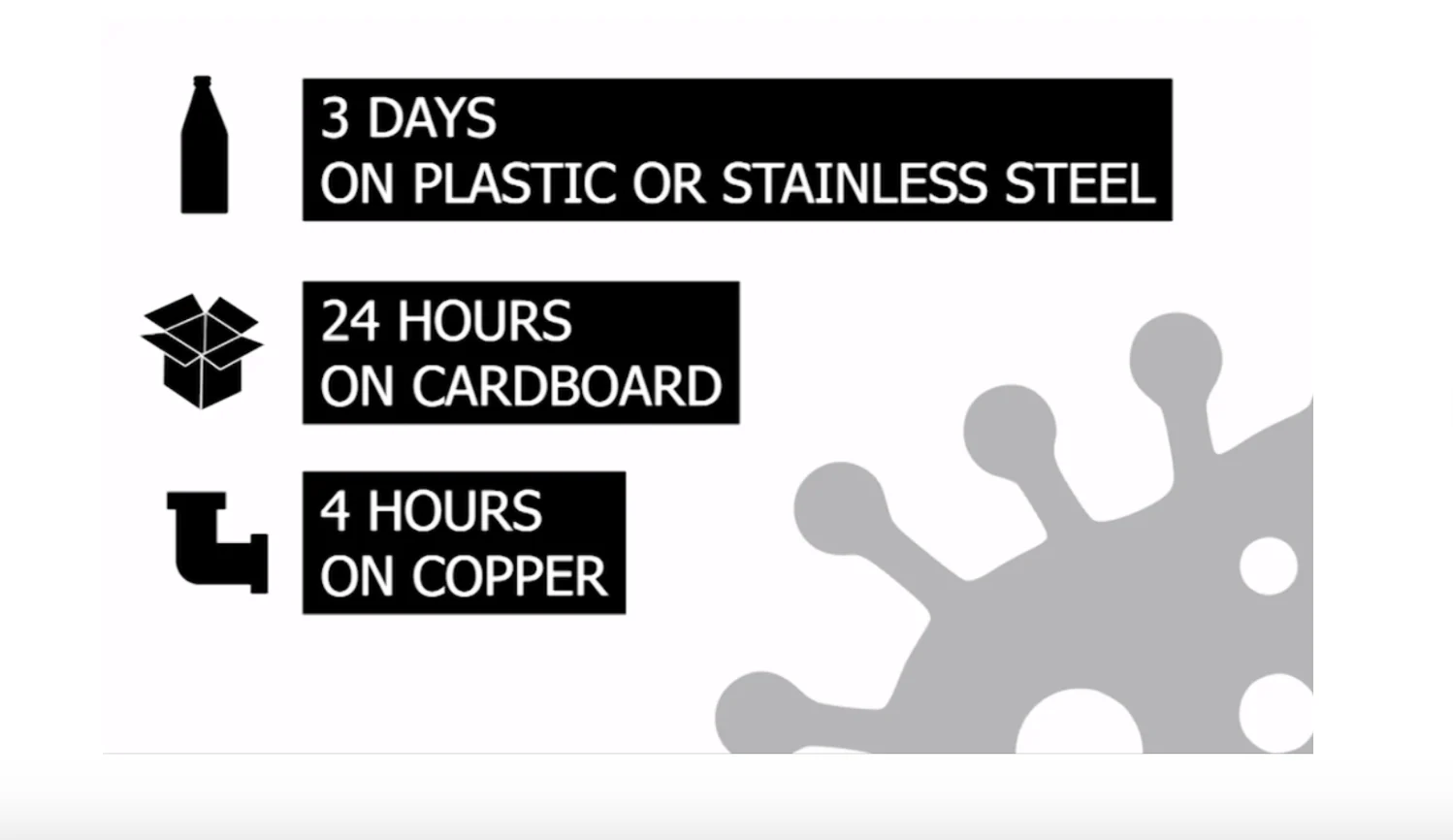
COVID-19 spreads mainly from person-to-person, health officials say
COVID-19 'does not spread easily' from contaminated surfaces, says the CDC
It’s the invisible killer that has travelled the globe: COVID-19.
Since we cannot see this virus with the naked eye, the idea of it lingering in our home, on our newly bought groceries or in the doctor's office is a real fear for many. But is surface transmission something we should really be concerned about?
In one of the first studies done about the length of time COVID can survive on a surface, researchers found the that the virus that causes coronavirus disease 2019 (COVID-19) was stable for several hours to days in aerosols and on surfaces:

Graphic courtesy of The Weather Network
However, as more research continues, scientists are finding that the greatest risk of transmission seems to be from person-to-person.
Below is an outline of how the virus can transfer, courtesy of the CDC:
HOW IT SPREADS FROM PERSON-TO-PERSON:
The virus is thought to spread mainly from person-to-person.
Between people who are in close contact with one another (within about 6 feet).
Through respiratory droplets produced when an infected person coughs, sneezes, or talks.
These droplets can land in the mouths or noses of people who are nearby or possibly be inhaled into the lungs.
COVID-19 may be spread by people who are not showing symptoms.
THE VIRUS DOES NOT SPREAD EASILY IN OTHER WAYS
COVID-19 is a new disease and we are still learning about how it spreads. It may be possible for COVID-19 to spread in other ways, but these are not thought to be the main ways the virus spreads.
From touching surfaces or objects. It may be possible that a person can get COVID-19 by touching a surface or object that has the virus on it and then touching their own mouth, nose, or possibly their eyes. This is not thought to be the main way the virus spreads, but we are still learning more about this virus.
From animals to people. At this time, the risk of COVID-19 spreading from animals to people is considered to be low. Learn about COVID-19 and pets and other animals.
From people to animals. It appears that the virus that causes COVID-19 can spread from people to animals in some situations. CDC is aware of a small number of pets worldwide, including cats and dogs, reported to be infected with the virus that causes COVID-19, mostly after close contact with people with COVID-19. Learn what you should do if you have pets.
Watch the video above as experts weigh in on the truths about surface transmission.
Thumbnail image courtesy of Getty Images






